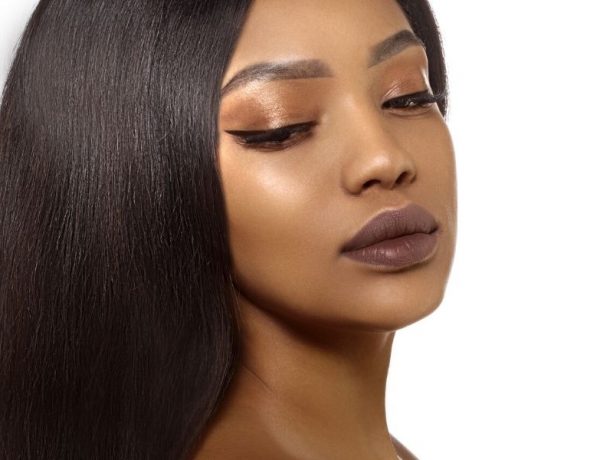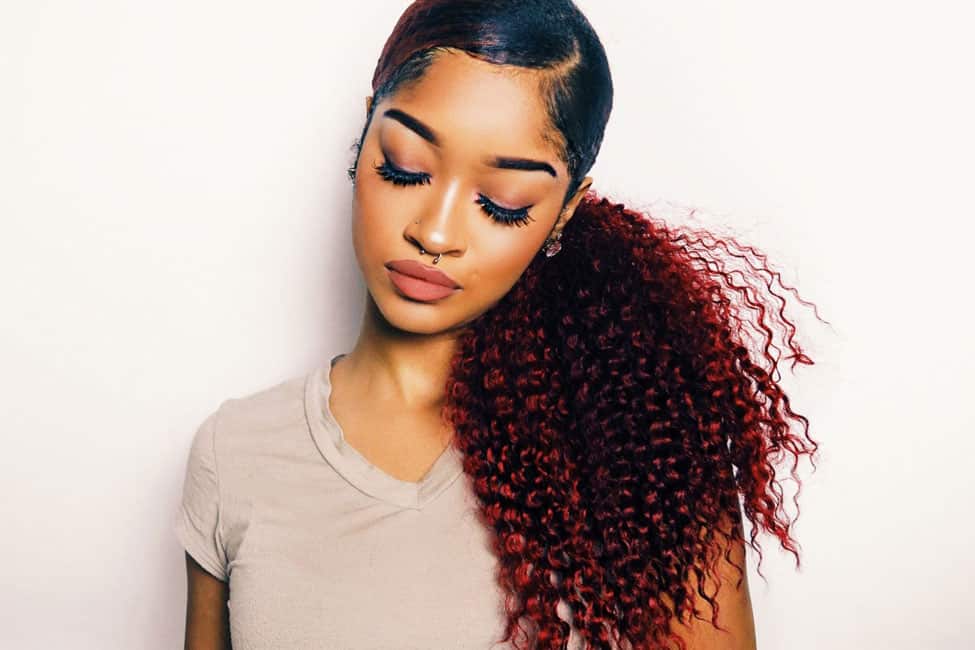A hair weave can give you the long, sexy locks you’ve been dreaming of, and it can be done in a very short time.
The only catch is the dream comes at a price — the weave needs routine maintenance. The weave should also be removed at least twice a year to give your real hair a breather.
The Procedure
A sewn-in hair weave is just that – a weave attached to your hair with a needle and thread. Yes, it’s just like sewing.
The procedure begins with the braiding of a tiny section of hair. The weave is sewn to the braid. The needle is threaded with matching thread, then sewn half-hitch knots hold the weave in place.
The braiding and sewing is done in even rows until the weave blends naturally with your hair. From start to finish, the procedure takes about four to six hours.
Loosening Up
Once the weave is in your hair for eight weeks, it will more than likely begin to loosen up. For some women, this loosening may go unnoticed until the 10th week, which is as long as anyone should wait for a redo.
Once the weave loosens, it will only get worse. The weave may begin to slide down your hair strands, and possibly break off some of your hair. At that point, you will need to visit your hairdresser to correct the weave.
The Redo
After the eight to 10-week cycle of wear, the weave inevitably needs to be retightened at the base.
This involves cutting the threads, rebraiding each section, and sewing in fresh threads. As long as you have the extensions, plan on visiting your hairdresser every eight to 10 weeks until it’s time to remove the weave.
Removal
Once a sewn-in weave hits its sixth month, it is time to bid it goodbye. The weave may look great, and you may be reluctant to do so, but it’s for the best.
Leaving a sewn-in weave in your hair longer than three months may damage your real hair underneath. That can lead to tangles, mattes, breakage and structural damage, and you don’t want any of that.
General tips for washing your hair and weave
Products Required
- Sulphate free shampoo diluted-1 part shampoo 4 parts water (in color applicator bottle)
- Moisturizing conditioner diluted ( as above) in a color applicator bottle
- Deep moisturizing conditioner
- Deep Protein conditioner
- Natural oil- Coconut oil/Extra Virgin Olive oil
- Hood dryer- for Human hair extensions
Washing Your Weave
Do not pile the hair on top of your head when washing and try to use cool water. If the weave is long dividing it into 2 – 8 plaits prior to washing can help to minimize the tangle factor. When running the water over your weave make sure the water pressure is low.
Apply shampoo to weave then smooth down the length with hands, press/squeeze them together enough to create a lather but do not scrunch and tangle hair. Gently rinse hair
Condition the weave following the method above. Gently squeeze excess water from weave with towel.
Washing Your hair
Concentrate on cleaning your scalp/cornrows. Be gentle,press in shampoo/conditioner and rub don’t scrub. Make sure the water pressure is low when rinsing, you don’t want to loosen your cornrows.
Washing your hair under weave
Run water down the hair. Do not scrunch. Squirt diluted shampoo on to your cornrows, press shampoo into cornrows. Rinse well. Squirt diluted conditioner on to cornrows press conditioner into cornrows. Rinse well
Drying –Very important!
Your cornrows underneath your braids must be dry before you sleep on them, or your hair can mildew and smell! Hood drying your cornrows is the safest way to know they are dry – Human hair extensions only!
Sew in Weave Maintenance
- Wash and condition your hair and oil your scalp weekly while you have your weave in to keep your scalp clean and moisturized and limit dandruff.
- For Synthetic hair try wash hair in the morning so you can allow your hair to air dry.
- Sew-in track extensions, whether synthetic or made from human hair, should be washed like real hair. It’s important to keep your hair moisturized weekly and wrapped in a scarf or bonnet at night.
- Follow manufactures advice for styling.




